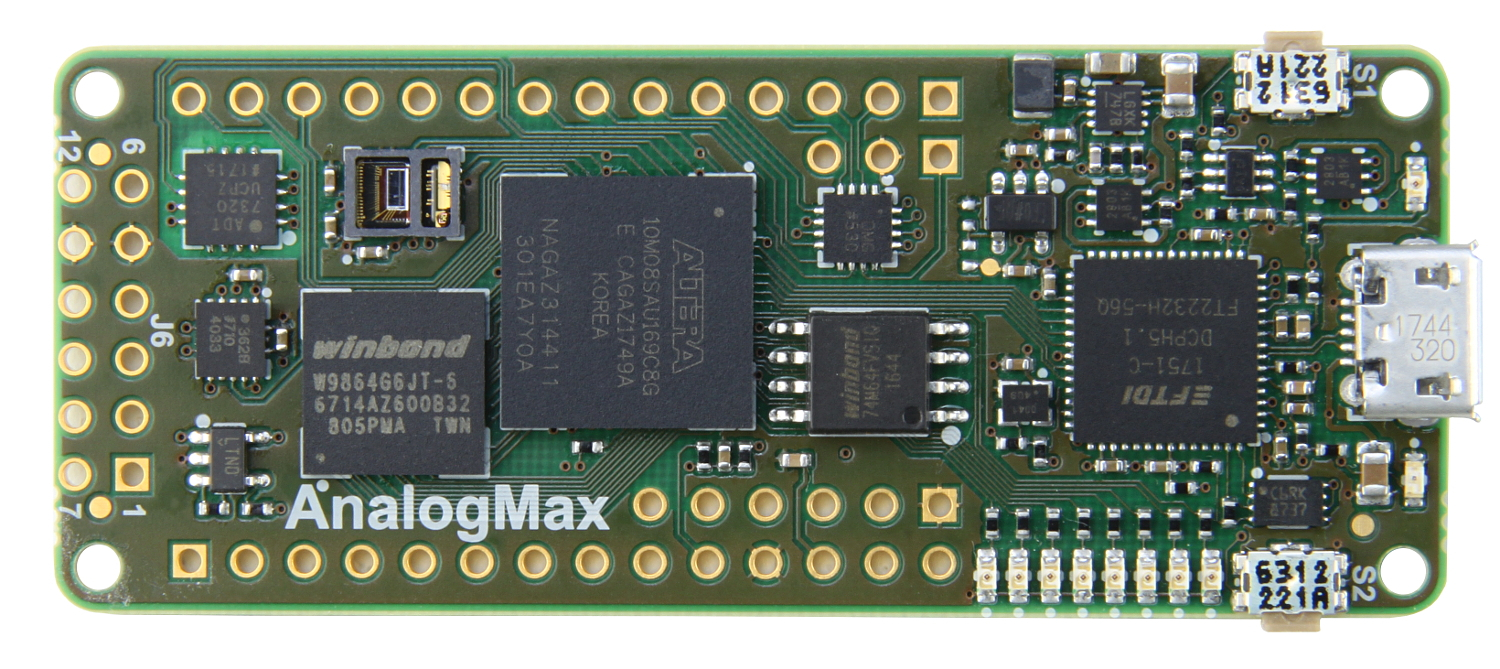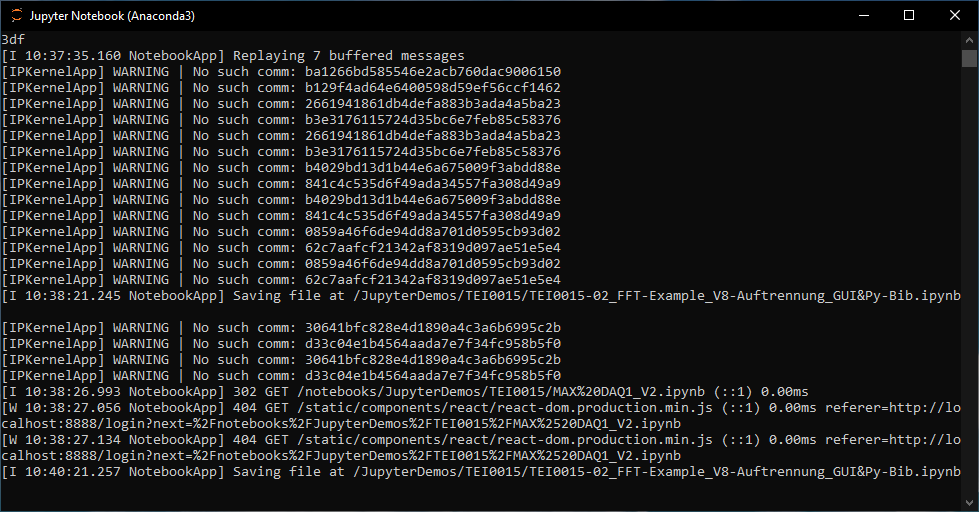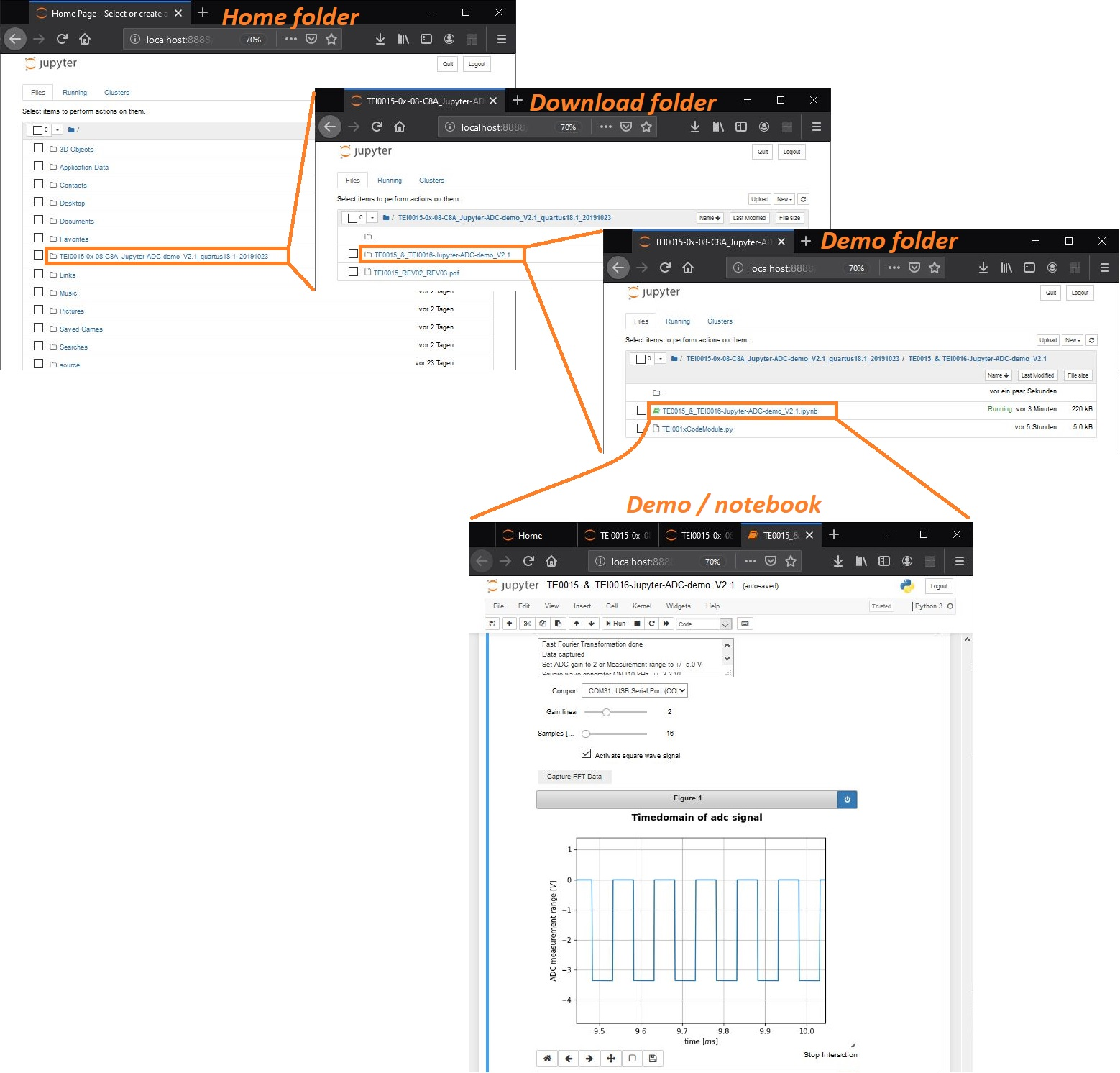 Example picture
Example picture
The modules TEI0015, TEI0016 and TEI0023 offer software demonstrations of their basic functionality and
communication interface. This manual provides a step by step guide for installing the required software and
running the demos in general.
For the ease of accessibility and programmability the language Python (since version 3.5) has been chosen.
The project Jupyter provides an excellent and open source entry for beginners and professionals.
Jupyter files are called Notebooks and have the ending fileName.ipynb, this manual refers to them as demo.
The following description of steps applies in its details to computers running windows 10, for other
operation systems, the steps are in general similar.
So running and editing the Demos requires the following steps:
The simplest way to execute the demos in Jupyter is accomplished throw the installation of Anaconda.
This will install more than is needed but nearly all requirements in one step.
The Anaconda website provides detailed instructions on how to install the application, just follow this link.
If the installer offers you the installation of optional applications, just skip those, they are
not needed to run the demos or edit their code.
At least with Anaconda installation on Windows, pyserial (python serial port support library) is not
included and has to be installed. This can be done from the Anaconda command prompt. To open the
Anaconda command prompt, just press the windows key, type Anaconda prompt and open it. Enter
conda install -c anaconda pyserial
into the command prompt an press enter. This starts the search for software dependencies of pyserial,
you are asked to confirm the installation, to proceed press Y.
The console shows a message when pyserial is installed and thereafter the console is no longer needed
and can be closed.
The demo is available through a link in the parent page. The download is a folder, containing all the necessary
files and documents. The download folder is compressed into a zip archive and need to be extracted, to be accessible for
Jupyter.
Jupyter has access to the user folder, so a convenient way is to copy the extracted demo folder
(TEI001X-0x-08-C8A_Jupyter-ADC-demo_Vx.y_quartusxy.z_...) into your users folder, for example:
C:\Users\Username\download-folder
To open Jupyter, press the windows key and type Jupyter, this presents "Jupyter Notebook (AnacondaX)" to you,
from which one can start Jupyter.
Jupyter is based on the server client structure, the server is executed in the background, and the client is a webpage
inside your default browser.
So opening it starts the server, which opens a console displaying status messages of the server.
The console must be open all the time, you want Jupyter to run. You can minimize it.

Generally, the Jupyter tab inside your browser is in itself a file browser. Jupyter has access only to
your user or home folder which it displays after the program start. To start a notebook, one has to
navigate to the folder containing the notebook file.
Left clicking on a folder opens it. Going back or a level up is accomplished by clicking the back button
of your browser.
The path to this demo or notebook is:
In the picture below these steps are shown.

Every demo communicates with the module by a serial communication port. This port has been assigned
a number during the driver installation. In our case it is COM5.
In dependency to the code of a demo, there are two variants.
Variant 1:
At the beginning of the Notebook is a line:
ser = serial.Serial('COM5', 115200)
or
comport = 'COM5'
Replace the comport number in red with yours and save this change by pressing "s" whilst holding the
control key (Ctrl + s).
Variant 2:
Some demos contain a graphical user interface. The available comports will be presented
automatically and can be selected trough the GUI.
As an option, a default comport can be set at the beginning of the notebook.
A notebook consists of cells, in which its content resides. Demos so far only contain one cell, to run the demo,
the PC's focus must be upon the cell, left clicking into the cells source code focuses this cell.

Now the demo can be run through pressing the run button,
stopped by the button with the black rectangular,
reloaded through the circular arrow and lastly
reloaded and rerun by the two arrowed button.
The notebook can be closed either by closing the tab or via File → "Close and Halt".
Often demos gather data from the module and display them in graph plots.
All output of a notebooks cell is displayed below the cell.